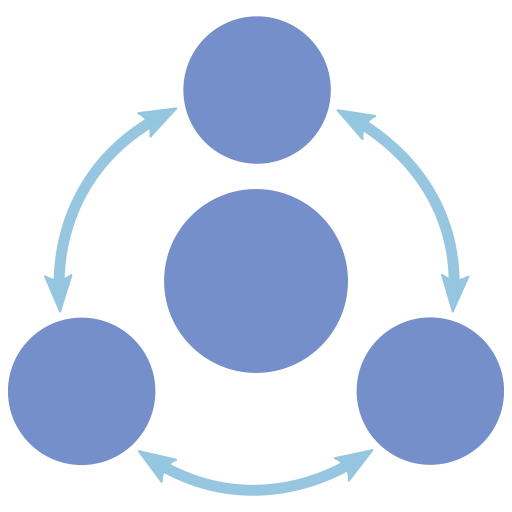Download Publication Data
If you are looking for files associated to our publications, please click the following link. You will be forwarded to our publication data site.
All publications
Image-based quantification of Candida albicans filamentation and hyphal length using the open-source visual programming language JIPipe
Jan-Philipp Praetorius*, Sophia U. J. Hitzler*, Mark S. Gresnigt#, Marc Thilo Figge#
The formation of hyphae is one of the most crucial virulence traits the human pathogenic fungus Candida albicans possesses. The assessment of hyphal length in response to various stimuli, such as exposure to human serum, provides valuable insights into the adaptation strategies of C. albicans to the host environment. Despite the increasing high-throughput capacity live-cell imaging and data generation, […]
Convergent evolution of a fungal effector enabling phagosome membrane penetration
View ORCID ProfileLei-Jie Jia, Freddy Alexander Bernal, View ORCID ProfileJeany Soehnlein, Johannes Sonnberger, View ORCID ProfileIsabel Heineking, Muhammad Rafiq, View ORCID ProfileZoltan Cseresnyes, Franziska Kage, Franziska Schmidt, View ORCID ProfileRasha Zaher, Peter Hortschansky, Shivam Chaudhary, Xuemin Gong, View ORCID ProfileJan Schirawski, View ORCID ProfileMarc Thilo Figge, View ORCID ProfileBernhard Hube, View ORCID ProfileAxel A. Brakhage
The ability of pathogens to evade phagosomal killing is critical for their pathogenicity. Previously, we had identified the HscA effector protein in the clinically important fungal pathogen Aspergillus fumigatus, which redirects conidia-containing phagosomes from the degradative to the non-degradative pathway. Here, we discovered a pathogenic form of this surface protein, determined by a single tyrosine residue […]
Deciphering respiratory viral infections by harnessing organ-on-chip technology to explore the gut–lung axis
Hristina Koceva, Mona Amiratashani, Parastoo Akbarimoghaddam, Bianca Hoffmann, Gaukhar Zhurgenbayeva, Mark S. Gresnigt, Vanessa Rossetto Marcelino, Christian Eggeling, Marc Thilo Figge, Maria-João Amorim and Alexander S. Mosig
The lung microbiome has recently gained attention for potentially affecting respiratory viral infections, including influenza A virus, respiratory syncytial virus (RSV) and SARS-CoV-2. We will discuss the complexities of the lung microenvironment in the context of viral infections and the use of organ-on-chip (OoC) models in replicating the respiratory tract milieu to aid in understanding […]
Intuitive Abläufe für die automatisierte Bildanalyse. JIPipe als quelloffene Softwarelösung für FAIRe Bildanalyse.
Gerst R, Cseresnyés Z, Figge MT# (2025) Online-Publikation bei Wiley Analytical Science
Die zunehmende Verfügbarkeit komplexer bildgebender Verfahren erfordert skalierbare und reproduzierbare Softwarelösungen, die in der Lage sind, alle in hochauflösenden, multimodalen Bilddaten enthaltenen Informationen zu nutzen. JIPipe ist eine quelloffene, metadatengetriebene Bildanalyseplattform zur visuellen Erstellung von Analysepipelines ohne Programmierkenntnisse. Das System ist für ein breites Anwendungsspektrum konzipiert und wurde bereits erfolgreich in Studien der Molekular- und […]
Spatiotemporal modeling quantifies cellular contributions to uptake of Aspergillus fumigatus in the human lung.
Commun Biol
Saffer C, Timme S, Ortiz SC, Bertuzzi M, Figge MT
Rapid detection of microbial antibiotic susceptibility via deep learning supported analysis of angle-resolved scattered-light images of picoliter droplet cultivations
Sensors and Actuators B: Chemical
Sarkar A*, Graf M*, Svensson CM, Munser A-S, Schröder S, Hengoju S, Rosenbaum M, Figge MT
The progressive increase in microbial resistance to antibiotics is a global health threat that requires solutions for rapid and reliable determination of antibiotic susceptibility in order to select appropriate antibiotics and dosages prior to treatment. We have established a screening platform that enables the detection of cell growth after just a few cell divisions. Our […]
Tracking the uptake of labelled host-derived extracellular vesicles by the human fungal pathogen Aspergillus fumigatus
microLife
Visser C, Rivieccio F, Krüger T, Schmidt F, Cseresnyés Z, Rohde M, Figge MT, Kniemeyer O,Blango MG*, Brakhage AA*
Extracellular vesicles (EVs) have gained attention as facilitators of intercellular as well as interkingdom communication during host-microbe interactions. Recently we showed that upon infection, host polymorphonuclear leukocytes produce antifungal EVs targeting the clinically important fungal pathogen Aspergillus fumigatus; however, the small size of EVs (< 1 µm) complicates their functional analysis. Here, we employed a more […]
Aspergillus fumigatus-derived gliotoxin impacts innate immune cell activation through modulating lipid mediator production in macrophages
Immunology
Günther K, Nischang V, Cseresnyés Z, Krüger T, Sheta D, Abboud Z, Heinekamp T, Werner M, Kniemeyer O, Beilhack A, Figge MT, Brakhage AA, Werz O#, Jordan PM#
Gliotoxin (GT), a secondary metabolite and virulence factor of the fungal pathogen Aspergillus fumigatus, suppresses innate immunity and supports the suppression of host immune responses. Recently, we revealed that GT blocks the formation of the chemotactic lipid mediator leukotriene (LT)B4 in activated human neutrophils and monocytes, and in rodents in vivo, by directly inhibiting LTA4 […]
Engineering Adhesion of the Probiotic Strain Escherichia coli Nissle to the Fungal Pathogen Candida albicans
ACS Synth Biol
Chamas A#, Svensson CM, Maneira C, Sporniak M, Figge MT, Lackner G
Engineering live biotherapeutic products against fungal pathogens such as Candida albicans has been suggested as a means to tackle the increasing threat of fungal infections and the development of resistance to classical antifungal treatments. One important challenge in the design of live therapeutics is to control their localization inside the human body. The specific binding […]
Metamizole outperforms meloxicam in sepsis: insights on analgesics, survival and immunomodulation in the peritoneal contamination and infection sepsis model
Frontiers in Immunology
Liu N, Sonawane M, Sommerfeld O, Svensson CM, Figge MT, Bauer Reinhard , Bischoff SJ,Bauer M, Osuchowski MF, Press AT
Background: Limited availability and side effects of opioids have led to an increased use of non-opioid analgesia in animal disease models. However, by affecting the immune-inflammatory reactions, analgesia may disrupt the resolution of the host inflammation and modulate the survival in septic animals. This study used a clinically relevant sepsis mouse model of peritoneal contamination […]




